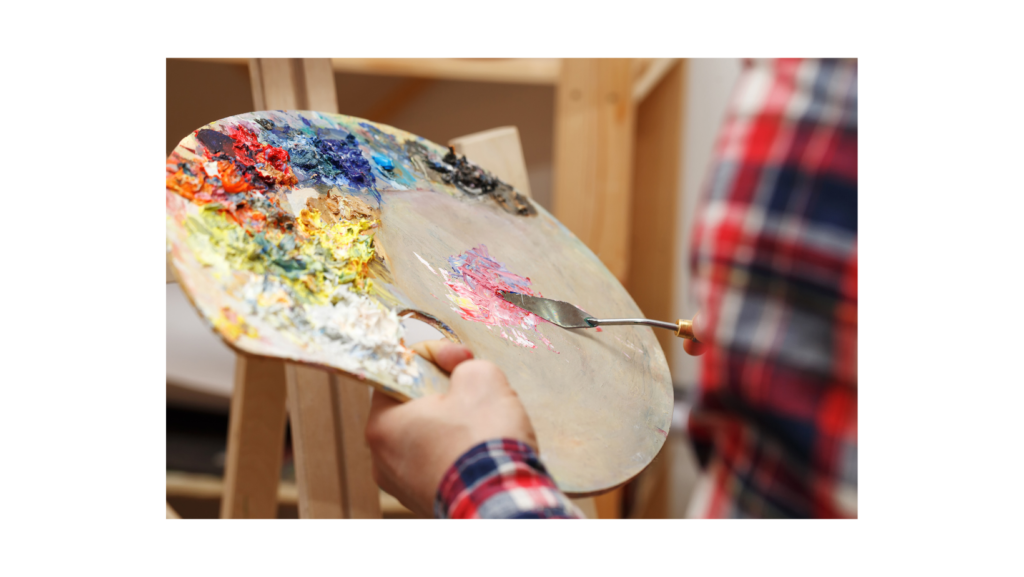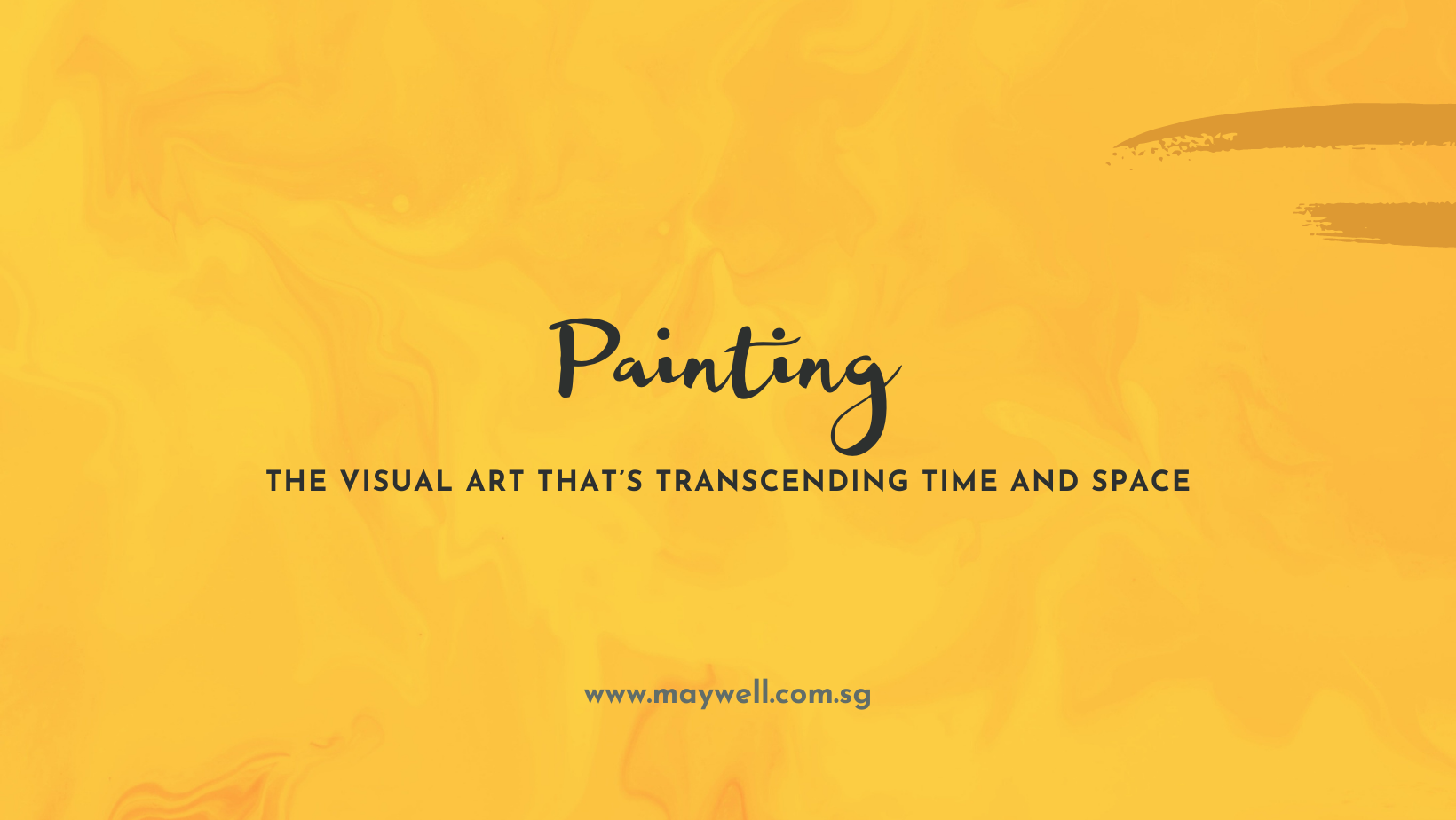Painting – The Visual Art That’s Transcending Time And Space
While Wikipedia defines the art of painting as the “process of applying paint, pigment or color to a solid surface using brushes” to express an artist’s imagination, the real meaning of this craft is a whole lot more.
For many, painting is a language that they can use to express their ideas and emotions, things that can’t be conveyed just with words. With elements like shapes, colors, lines, and textures, the artist can cleverly create sensations of space, volume, movement, and light – sensations that can help convey the story of a thousand words at just a glance to the viewer.
Every artist has a certain style that is unique to them. And every artist has their own favorite painting method and medium that they swear their life by.
In any case, a painting is undoubtedly one of the best ways to represent real or supernatural phenomena, to interpret and visualize a narrative, or to put forth an abstract visual relationship that has a hundred meanings in every brushstroke and line.
The Art of Painting – The Original Human Art!
As proven by prehistoric cave paintings from all over the world, the art of painting is something that has enchanted us humankind since, well almost its beginning.
Of course, we have swapped the old colored stones and mud for oil/acrylic paints, brushes, and even digital pens. Then there are artistic movements like realism, imperialism, pop art and abstract, and more to consider (a story for another day?). Finally, there are many crucial factors nowadays like religion, trends, entertainment, education, and politics that profoundly affect how a painter is going to be using his brush and canvas.
Still, when it finally comes down to it though, the painter’s skill & imagination is what that matters, and how he wields them both.
Everything else, well they’ll all just fade into background noise…
Yes, this “purity” in approach is what makes this craft so valuable – and we are also saying this quite literally. It’s only recently that “Salvador Mundi,” a Leonardo Da Vinci masterpiece, got sold at an auction for a whopping $450 Million!
Of course, most painters are not Da Vinci & they don’t do it just for the money. They do it because they love it, because it’s fun, and most importantly;
Because painting is, and will remain so forever, a way for them to express and display their imagination and heart for the whole world to see.
The Art Of Painting – Elements Of A Painting Masterpiece
According to modern art experts, a painting’s main elements are a) color and tone b) Rhythm. Let us explain more;
1. Color and tone
Our world is a colorful one, and since painting is all about recreating and reimagining the same, colors play a huge part in bringing a painting to life. some go for muted tones while others go all out with bright punchy shades or a mix of both.
Either way, color is a subjective choice, it’s also something with psychological meanings. For example, black is often associated with death and sadness in the west. In the east, however, white is. It’s totally up to the artist to decide how to use the shades best to tell the painting’s story. Again, every painter has their own way of doing this. Hence, the viewer must be well aware of each artist’s styles to best appreciate their works.
2. Rhythm
This is a tricky one to explain. Still, the concept goes on.
Like how there is a rhythm in music that enables it to carry different meanings with different note variations there is also a certain rhythm in painting that uses things like brushwork, rendering of light, and colorations to convey different emotions.
To elaborate, Rhythm is a design principle that infuses movement or action in a painting. It uses repetition of lines, shapes, and colors to create a visual ‘tempo’ in paintings that provides the viewer a path to follow and best enjoy it.
Bringing rhythm into one’s art might possibly be one of the hardest tasks for a painter could possibly imagine. You are literally bringing movement to an otherwise static medium. Done right, it can carry emotions that words even can’t describe. It can also help attract and put the art piece on better focus in the eyes of the public, art-trained or otherwise.
3. Methods Used in Painting – A Closer Look
There are many choices that you got to make when you decide to become a painter. Chief among them is your painting method of choice. Two of the biggest professional types are acrylic painting and oil painting.
Though they may look quite similar when squeezed out of their tube and both use canvas as a medium, there are clear differences to note when you start to use them. first, let’s break them down both to get a clearer picture of what they are all about;
4. Oil painting

In the art history sense, oil paintings are forever classic. They have been in use since as far back as the 12th century and were used to create some of the most iconic painting masterpieces like the Mona Lisa, The Night Watch, and The Starry Night.
As their name suggests, oil paints use pigments that are infused and suspended in oil (usually linseed). While oil paintings can keep their sheen for long, they need a bit of extra work to clean and maintain their goodness as they can be easily damaged with water.
Oil paints tend to dry slowly (it can take days to set) and they also tend to fade in visual quality over time. If you look at old paintings, you can clearly see a yellow hue on what should have been a white section. This is because the pigment in oil will get duller over time.
5. Acrylic painting
First commercialized in the 1950s, the Acrylic paints feature pigments that are suspended in acrylic polymer emulsion. The Consistency and resulting looks are almost similar to oil painting but unlike the former, acrylic doesn’t need any special chemical like turpentine to get thinned. a bit of water will do just fine. For these reasons, acrylics are much preferred by beginners.
Acrylics tend to dry in just a few minutes. Hence, it’s perfect if you prefer to complete your painting in one sitting. Acrylics also tend to keep their visual acuity better. once painted, it will look the same as now as they will many decades after.
6. Acrylic Vs Oil – Which Painting Method Is Best For You?
Now that you know what the main differences between acrylic and oil painting methods are, the question now you got to ask is ‘what’s best for you?’
Simply put, it all comes down to what kind of paintings are you trying to make. If you are keen to do something that’s a bit classic and adheres to traditional styles, go for the oil paints. Prefer something a bit more modern & experimental? Acrylics are the way to go.
Finally, there is also one more thing you need to consider when choosing between them; and that’s the smell. Thanks to their natural origin and the use of turpentine for thinning, oil paints have a distinct odour that can be quite unpleasant.
The Art of Painting – The Conclusion
Though digital innovations are redefining how paintings are made these days, there is still that rustic appeal to taking the brush and paint and translating what’s in our hearts to the canvas. Painting is a timeless art. And one that’s also inclusive. Here, only skill is what matters – nothing else.
Whichever painting medium you choose to work with, it’s important that it be comfortable and aligns and blends well with your artistic vision. Also, it’s crucial to keep on practicing and improve one’s painting skills with the changing times.
At maywell.com, we offer premium quality acrylic and oil paintings from skilled artists from around the world to you at affordable prices. we also offer stretching and framing of your canvas masterpieces. For more info, reach out to us at enquiry@maywell.com.sg


